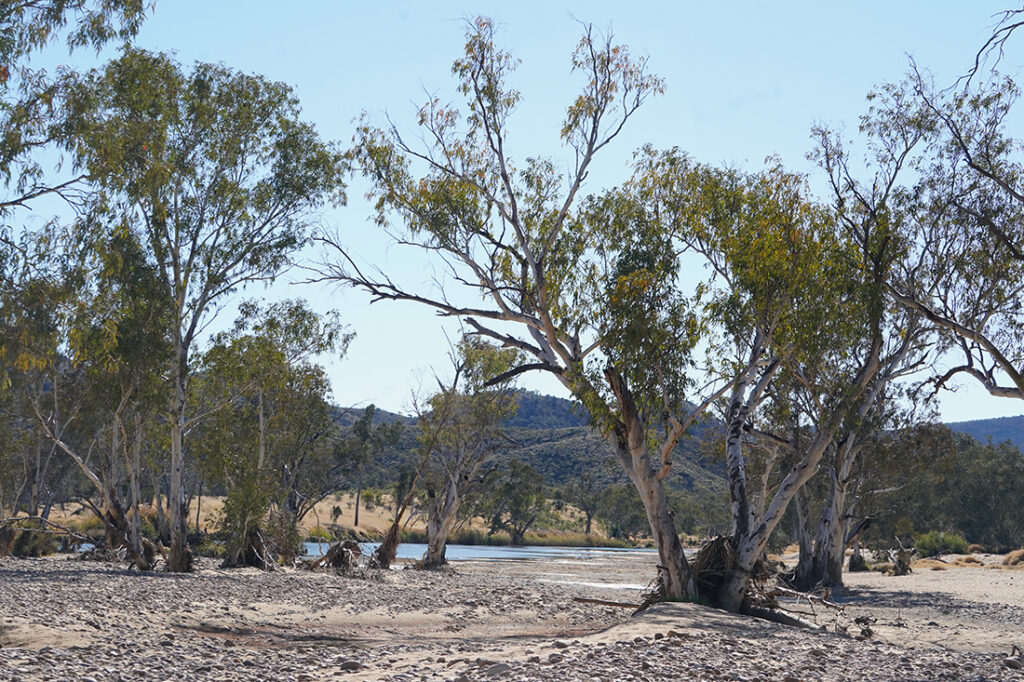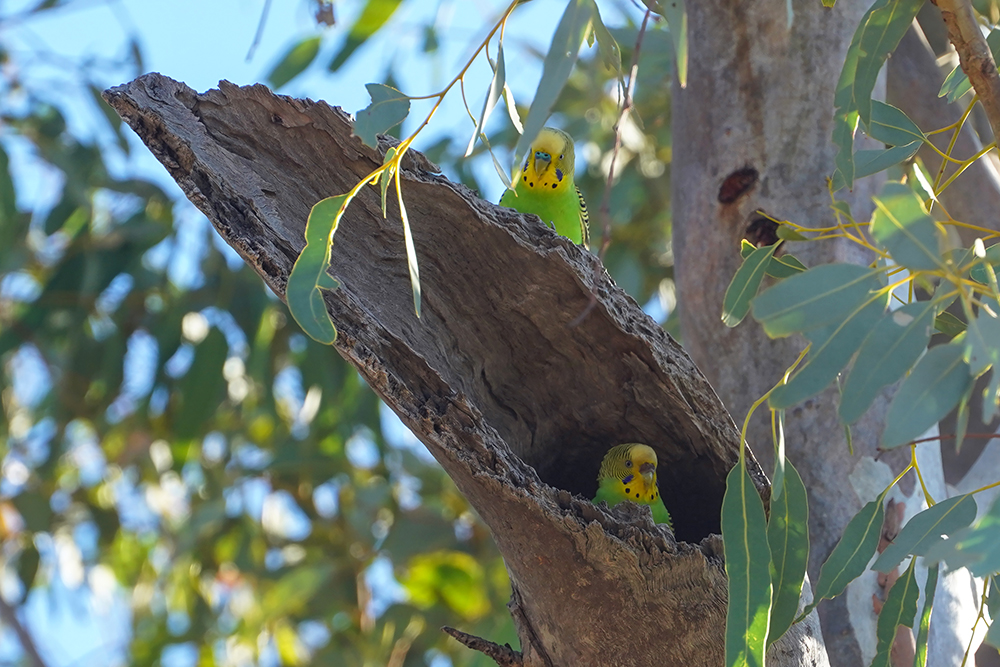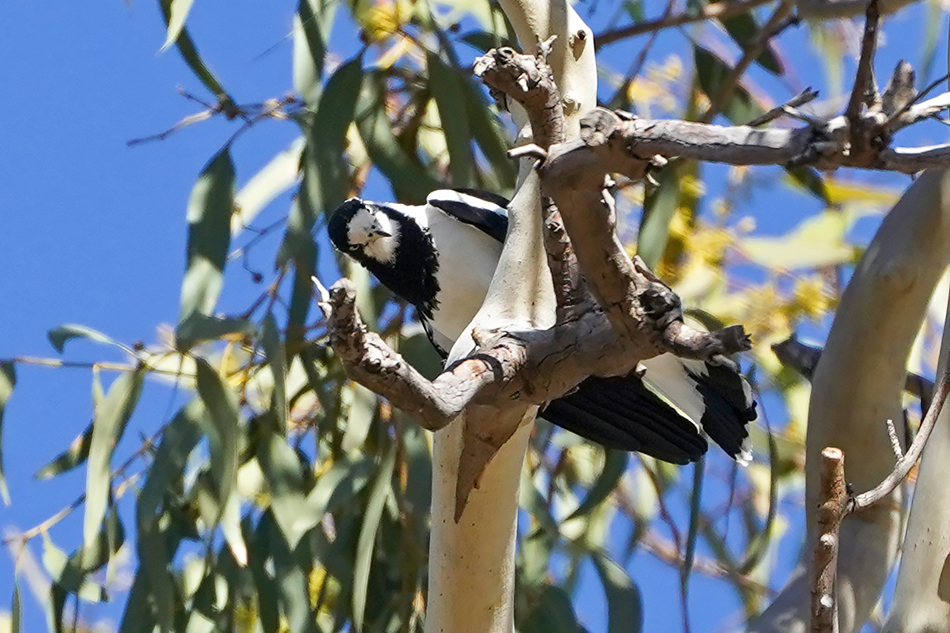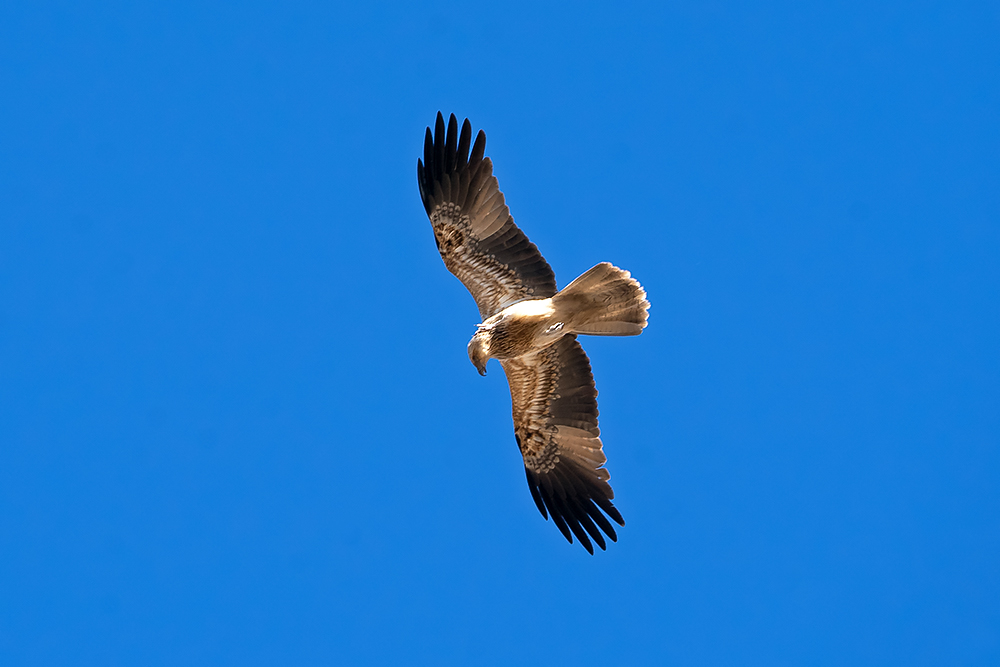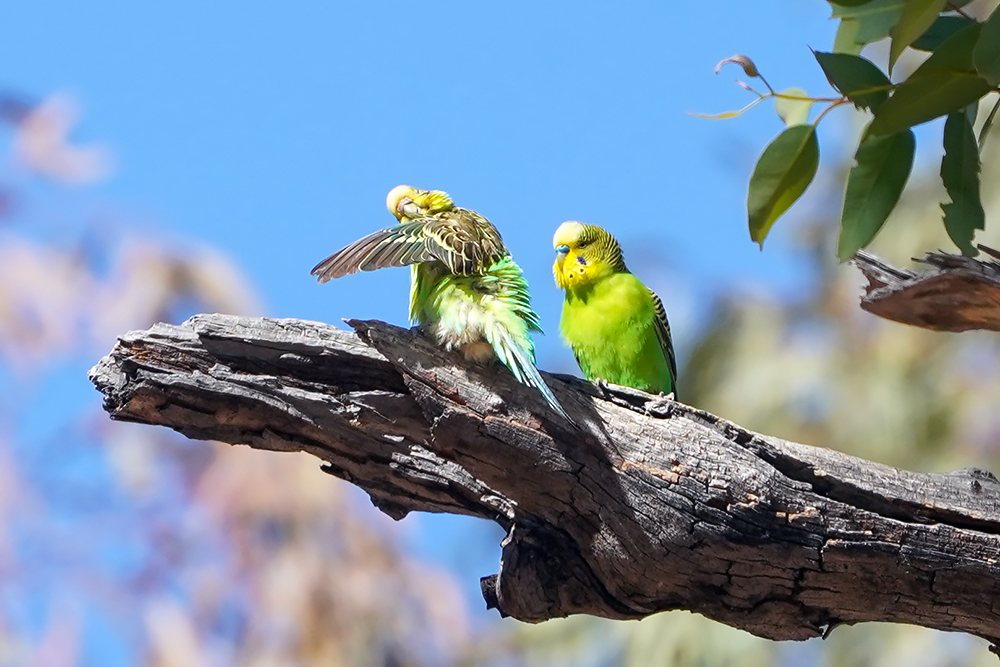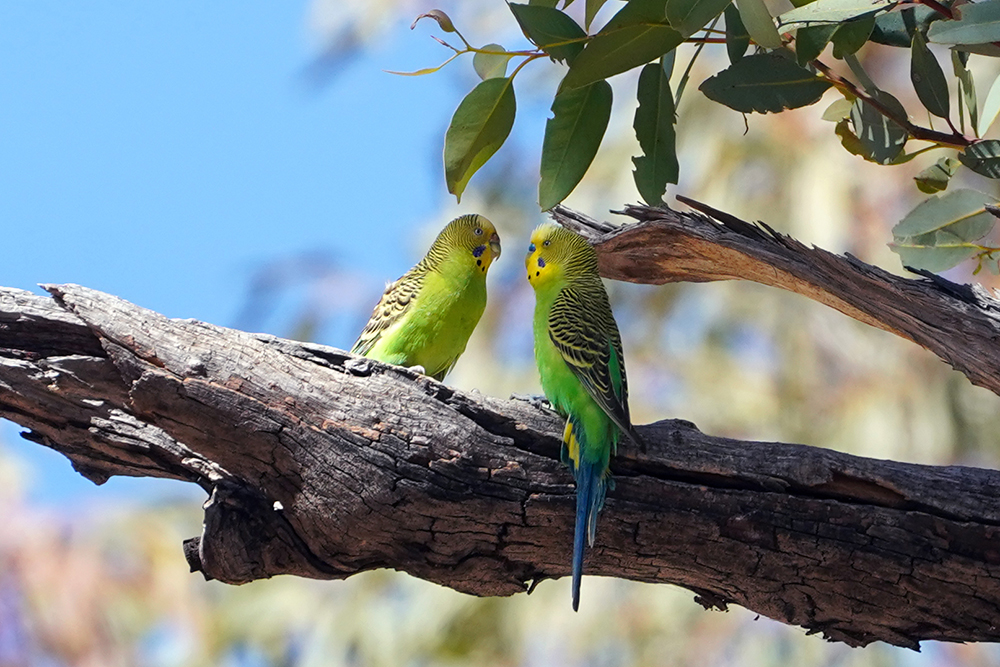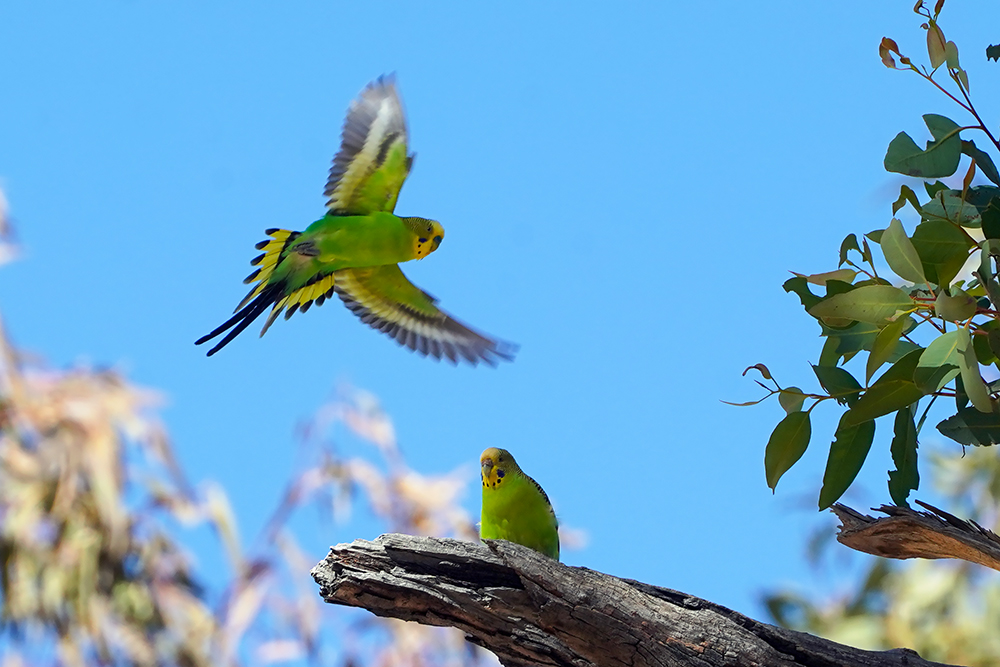The Finke River has its headwaters west of Alice Springs, Central Australia. It intersects with a famous hiking trail, the Larapinta. I recently walked some parts of that trail with a group that moved pretty fast. I could see that the Finke was a remarkable place, especially for birds. In particular, some of the trees seemed alive with budgerigars, the small yellow-green parrots kept all through the world now in cages. Budgerigars live wild through much of Australia, and I’d encountered them in flocks on an earlier bird tour, but I’d never seen them up close. With these and all sorts of other birds in the trees, I decided to come back the day after the hikes were over.
I arrived about 8.30 am, parked the car near some trees, and immediately saw a budgerigar emerging from its nest hollow – doing so with what looked like full, snooze-button, human reluctance.
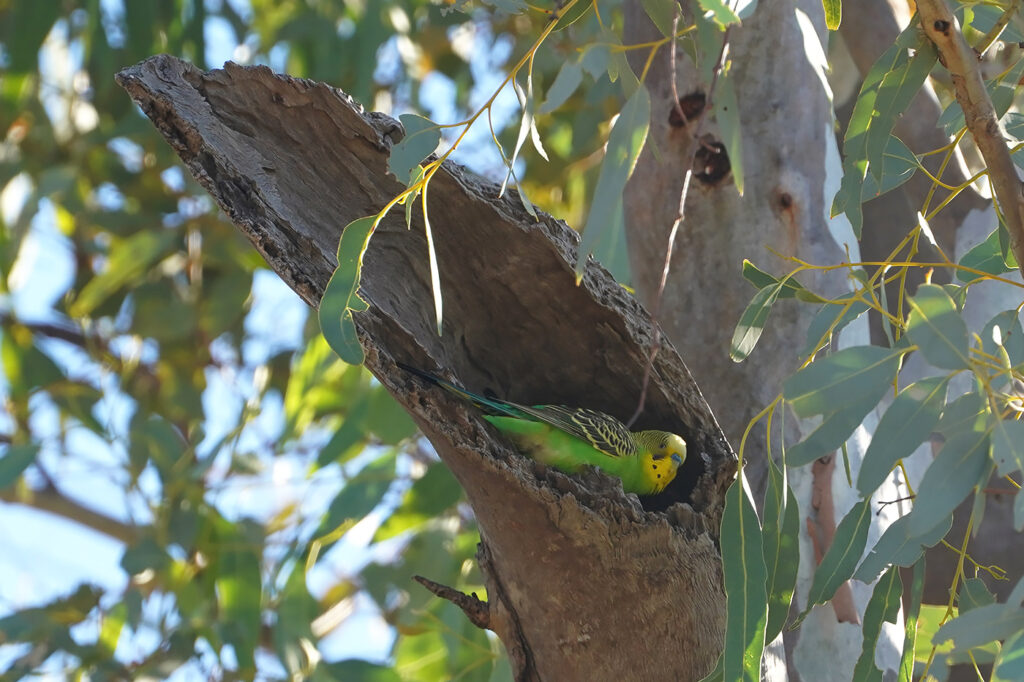
A second one, just as reluctantly, followed.
I moved along and beside the river bed, one of those beautiful Australian places – sand, smooth rocks, pale eucalpyts, no water visible most of the way, but running silently below. I stopped at a huge tree. It was a sea of activity featuring at least four species. Two budgerigars were mating (I’ll put links at the end of the post), and the tree had dozens of others. A magpie lark watched me closely…
… A few finches were messing around, and a large bird of prey, a Whistling Kite, came cruising in and perched high in the tree. Some of the budgerigars scattered; others stayed put.
This tree (now christened “Tree 2”) is going to feature in a few future stories and posts, but this time I moved on, heading further towards the ranges and the start of the river.
I found another tree (Tree 3) that was shrieking with activity.
These are fascinating birds, constantly calling, jostling, grooming. At least here on the river, they seemed to rarely let up, and this continued through much of the day. There was no quiet time in the early afternoon, despite the heat. They just kept going.
I saw a fair bit of mating. Many parrots are monogamous. I thought, as I watched the budgerigars: perhaps not in this case. I read later that they are monogamous and mate for life. Still, I am not sure that all of them had read the email. Multiple males often seemed interested, at least, in a particular female. Perhaps this was to little effect, and she stuck with one, or perhaps I was seeing stages when the bonding had not yet taken place.
In all these photos and videos, the males can be identified by the blue patch just above the beak. The same patch is brown in the females. A female in Tree 2 certainly touched beaks, in a friendly-looking way, with a male other than one she had mated with.
In these groups of three or four, there is a lot of chest-on-chest bumps and pushes. Especially around Tree 3, the cacophany never stopped, and I am sure there were hundreds, thousands of them around me, zooming off into the air and returning.
Back in a bush near Tree 2 I saw a solitary budgerigar on its own looking pensive. Perhaps taking a break.
Here is a short video taken at Tree 3, with some good chest-bumps around 8 to 11 seconds. At the start of the video, the one on the left is a female and the other two are males. (YouTube has made it difficult to remove the writing and face photo; click on the title to watch directly.)
It was sad to think how many budgerigars live in captivity, in small cages. These are birds that really like to do things. They have a lot going on.
*****************************
Notes and More Videos
More videos taken at Tree 3:
(I am making occasional sounds as it’s hard to hold the camera still – long lens, no tripod, etc.)
[One more to come…]

